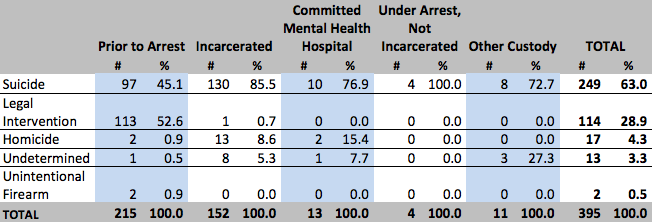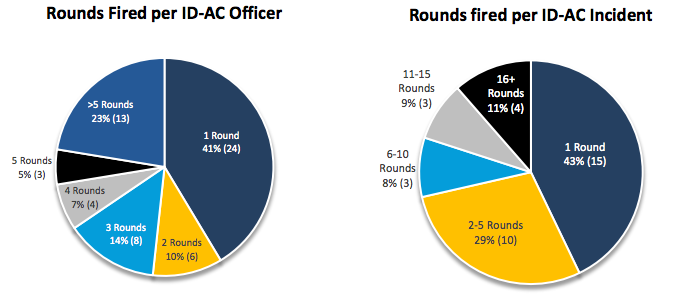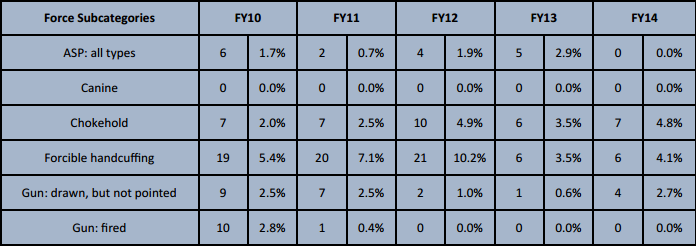PRIDE Act highlights importance of criminal justice data standards

During an arm chair discussion moderated by The Marshall Project’s Bill Keller last week, President Obama addressed serious gaps in how criminal justice data is collected nationwide: “Collecting data I think is something that’s going to be very important in guiding us forward … we don’t really do a good job right now in collecting national data on a real-time basis, but we now have the tools and the technology to do it better.”
The president echoed what many — including FBI Director James B. Comey — have been saying ever since the fatal police shooting of Michael Brown in Ferguson, Mo., prompted questions over why such incidents were not being captured accurately at the national level. In response, organizations such as The Washington Post and The Guardian have taken it upon themselves to log deaths resulting from police shootings by examining media reports and other independent databases.
We at Sunlight are trying to do our part in addressing these issues. Last week, it was announced that Sunlight, along with a host of other civil society foundations, have joined in calling for congress to pass the Police Reporting of Information, Data and Evidence (PRIDE) Act. The legislation would encourage departments to report on officer-related shootings and use-of-force incidents by increasing their capacity to do so through new grants. Perhaps even more notably, the PRIDE Act would make standardizing the definition and collection of use of force data a priority for the attorney general and FBI director.
And the better our data, the better we can target where is real crime going on, where are we seeing maybe some problems in police-community interactions that we can catch ahead of time — it’s transparent so the community then has trust because they’re seeing, all right, here’s what’s been happening, and so we’re initiating both internally at the federal level, but also reaching out to departments to figure out how do we get a national database that’s more effective.
Along with signing on to this legislation, Sunlight has been contributing to the fight for better criminal justice data over the past year. In that time, we have amassed an inventory of over 10,000 datasets from across the criminal justice system and the country, state by state. This information will be invaluable in helping us understand how different departments and agencies report and publish data relevant to the criminal justice system. Most importantly, it can tell us where to look for answers and where we should be highlighting the best practices that could soon be the standard for the future.
As an example, let us take a quick peek at how use-of-force data varies dramatically depending on the jurisdiction, illustrating why legislation like the PRIDE Act is desperately needed.
The Bureau of Justice Statistics’ Arrest-Related Deaths program
At the national level, the Arrest-Related Deaths program spearheaded by the Bureau of Justice Statistics is an initiative that takes into account “civilian deaths caused by any use of force by state or local law enforcement personnel as well as those not directly related to actions of law enforcement, such as deaths attributed to suicide, intoxication, accidental injury, and illness or natural causes.” The program expanded out of the Death in Custody Reporting Act of 2000, which was revived in 2013 and requires the collection of data on deaths that occurred in the process of arrest, during transfer or while detained in jail or prison.

The program was suspended in 2014 because an assessment revealed that it “did not sufficiently identify a census of arrest-related deaths and that the data collection likely did not capture all reportable deaths in the process of arrest.”
Virginia’s Violent Death Reporting System
Use-of-force data is hard to come across by state, but medical examiner data reveal unexpected insights into incidents involving officers. This information allows for deeper analysis of populations at risk for in-custody deaths and types of in-custody deaths, as well as the circumstances surrounding those deaths in Virginia.

Classified as “legal intervention” deaths according to the National Violent Death Reporting System’s terminology, these data stem from several sources, primarily the Office of the Chief Medical Examiner, law enforcement, the Virginia Division of Vital Records and the Virginia Department of Forensic Science.
New York Police Department’s Firearms Discharge reports
While police officer “use of force” does not usually strictly define police shootings of individuals, the New York Police Department produces annual reports on firearm discharges by officers that contain immense amounts of data on each shot fired during any given year, dating back to 2007. Department policy requires commanding officers to file a Shooting Incident Report within 90 days of the discharge, or until an investigation into the incident has been closed. The Chief of Department’s Firearm Discharge Review Board issues determinations over whether any disciplinary action is necessary given the nature of the discharge.

The data separate discharges resulting from adversarial conflict, animal attacks and unintentional actions. The report analyzes trends in shot location, completion rate, officer pedigree, distance and more.
D.C.’s Office of Police Complaints
Often, data on use of force is contained within reports on citizen complaints against officers. For instance, Washington, D.C.’s Office of Police Complaints publishes an annual report that includes an analysis of the types of force allegations against law enforcement, as well as citizen feedback on the mediation process.

These data are collected with the goal of improving policing in the district. As such, a complaint examiner will pursue cases when necessary, sometimes requiring an evidentiary hearing for an officer suspected of misconduct. The reports also include information on any disciplinary action handed down as a result of an investigation.
Takeaways
The problem of data standardization is extremely pervasive in the criminal justice system. Use-of-force data alone is published in a plethora of different ways; our analysis of courts, corrections and other data sources over the course of this project has confirmed that this problem extends into virtually every corner of the system.
Initiatives like the PRIDE Act are the first step in addressing the need for better, cross-comparable data in a space that operates at both the local level and beyond. Establishing the importance of this information for smarter policymaking has been a hard-fought battle that, fortunately, is gaining impressive traction. Still, an abundance of data alone is hardly as significant as a coordinated effort to ensure it remains consistent across every agency in every state.
We’re a long way from that goal. In the meantime, identifying where exemplary practices exist will continue to be important as we establish how data standardization can and should look in the criminal justice system.

